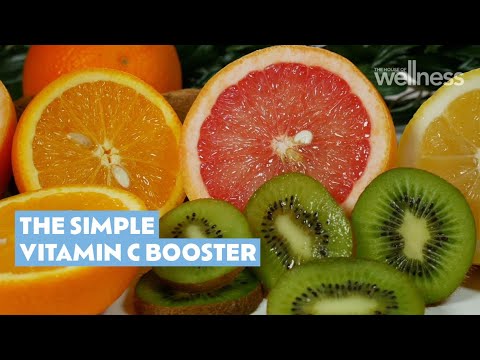Why is nutrition important for children with chronic kidney disease?
Eating the right foods in the right amounts may improve your child’s growth, help your child feel better, and prevent or delay health problems from chronic kidney disease (CKD).
Healthy kidneys balance the salts and minerals—such as calcium, phosphorus, sodium, and potassium—in the blood. When your child has kidney disease, his or her kidneys are damaged and can’t filter blood the way they should. What your child eats and drinks can help maintain a healthy balance of salts and minerals in his or her body.
Eating right can also make your child’s CKD medicines work better.
Your child’s health care team will work with you to create an eating plan with the right foods and nutrients in the right amounts for your child to grow properly. The team may suggest changes in both the amount and types of food your child needs as he or she gets older or if your child’s kidney disease gets worse. Learning about nutrients in the food will help you understand what changes you need to make to your child’s diet. You should always talk with the health care team before making any major changes to your child’s diet.
Why is knowing about protein important?
Protein is an important part of any diet. As your child’s body uses protein, it produces waste that the kidneys must remove from the blood. Too much protein can cause waste to build up in your child’s blood.
However, in children with CKD, too little protein can prevent them from growing normally and getting important nutrients. The goal is for children to eat enough protein to grow but to avoid excessive amounts of protein. The table below shows some common sources of animal and plant proteins.
Sources of protein
Animal-protein foods
Dairy products, such as milk, yogurt, cheese
Eggs
Fish
Meat, such as pork, beef, chicken, turkey, duck
Plant-protein foods
High protein
Beans, lentils, peas
Nuts and nut spreads, such as almond butter, peanut butter, soy nut butter
Soy foods, such as soy milk, tofu
Sunflower seeds
Low protein
Bread, tortillas
Oatmeal, grits, cereals
Pasta, noodles, rice
Rice milk (not enriched)
Children on dialysis
Children on dialysis need to eat somewhat more protein because the dialysis treatment removes some protein from the blood. The amount of protein removed from the blood depends on the type of dialysis treatment. Peritoneal dialysis typically removes more protein than hemodialysis.
Your child’s protein needs will change over time. A dietitian can work with you and your child to adapt meal plans to your child’s changing needs.
Why is knowing about sodium important?
Sodium is a part of salt. Different children with CKD have very different sodium needs. In some children with CKD, too little sodium can lead to dehydration and poor weight gain. In other children, too much sodium may cause high blood pressure NIH external link. What your child eats and drinks can help control the amount of sodium in his or her diet.
The amount of sodium your child needs will depend on the type of CKD your child has and how severe it is, your child’s age, and other factors. You may need either to limit or add sodium to your child’s diet. Talk with your child’s health care team about how much sodium your child should have.
If your child’s health care team suggests lowering the amount of sodium in his or her diet, you can help your child by
buying fresh fruits and vegetables
choosing unprocessed meats instead of processed foods
cooking from scratch
using spices, herbs, and salt-free seasonings instead of salt
looking for products labeled “sodium-free” or “low sodium”
draining and rinsing canned foods to removed salt
Higher- and lower-sodium foods
Foods higher in sodium include
bacon, corned beef, ham, hot dogs, luncheon meats, sausage
bouillon, canned soups, instant soups, ramen noodle packages
boxed mixes, such as hamburger meals and pancake mix
canned and pickled vegetables, vegetable juice
canned beans, chicken, fish, meat
canned tomato products, including juice
cottage cheese
frozen meals
frozen vegetables with sauce
olives, pickles, relish
pretzels, chips, crackers, salted nuts
ready-to-eat boxed meals and side dishes
salad dressings, bottled sauces, marinades
salt and salt seasonings, such as garlic salt
seasoning mix, sauce packets
some ready-to-eat cereals, baked goods, bread
soy sauce
Foods lower in sodium include
air-popped popcorn
cooked cereal without added salt
fresh meat, poultry, seafood
fresh or frozen fruits and vegetables
low- and reduced-sodium frozen dinners, peanut butter, salad dressings
low-fat, low-sodium cheese
rice, noodles
unsalted nuts
Source: Sodium: Tips for People with Chronic Kidney Disease (PDF, 167 KB)






